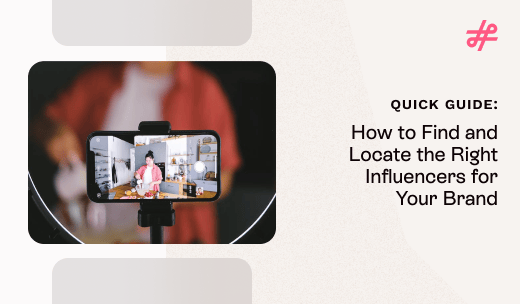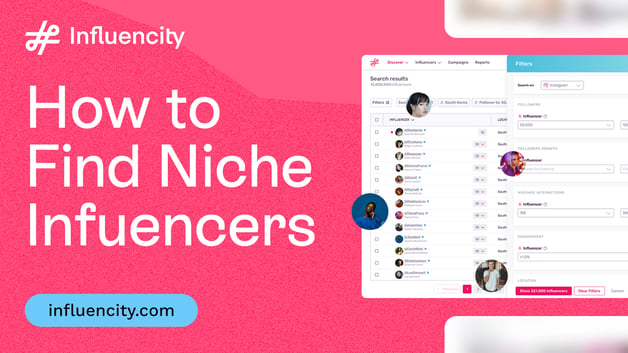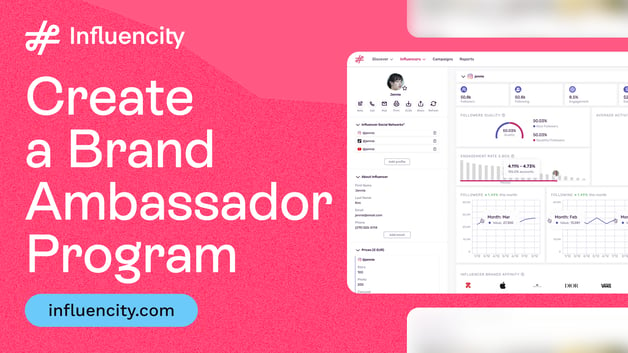Step 4: Invest in the Right Performance Tracking Tools
On that note, the right influencer tracking tools can significantly streamline your influencer performance analysis. You can find tools that let you manage your campaigns and track their overall performance in one place. Most tools come up with the capability to track metrics related to reach, impressions, and engagements.
For agencies, however, you need tools that go beyond the basics. Since you’ll be working with multiple clients with varying needs, you need tools that are capable of tracking every possible influencer metric.
In other words, look for tools that come with robust influencer analytics. Besides the above vanity metrics, you should be able to track brand mentions, hashtags, earned media value, and sales all in one place. Additionally, cost-related metrics like CPE and CPM make it easy to compare your campaign results against your spending. So you can better calculate influencer marketing ROI.

In addition to your overall campaign metrics, you should be able to track influencer-specific metrics. This will make it easier to analyze individual performance and identify your most profitable influencers. As such, you can easily fine-tune your campaigns or plan future campaigns around influencers who deliver the best results.
Influencity’s analytics capabilities offer all of these and more. The influencer tracking and management tool automatically collects all your campaign performance data to streamline your analysis. It lets you track platform-specific performance splits so you can see your most profitable platforms.

You can even create audience discount codes that influencers can share with their followers. This makes it easy to attribute sales to individual influencers and see where to maximize your investment.
Step 5: Compare Individual Influencer Metrics
No influencer performance analysis is complete without comparing individual influencer metrics against each other. Some influencers may generate a much bigger impact for your client than others, even though they may have a smaller reach. This means that they’re closely aligned with the brand, ensuring the ideal influencer-brand partnership.

If you’ve invested in the right influencer tracking tool as indicated in the previous step, this should be pretty straightforward. You’ll have access to a list of influencers activated for your campaign in your analytics dashboard. From here, you can easily view the performance metrics of each influencer.
Depending on the platform, you may even be able to sort the results in descending order, making it easier to identify your top-performing influencers.
Focus on the metrics that are relevant to your campaign goals and compare influencers against each other based on those numbers. Make sure to look at multiple metrics across different platforms to assess an influencer’s overall performance. For instance, an influencer may have a lower engagement rate on one platform but deliver better earned media value than on another platform.

Alternatively, they may have a more limited reach, but if they still deliver results with a low CPM, they could be perfect for clients on a limited budget. Consider these unique factors to identify which influencers deliver the most value and are best aligned for each client. This will help you fine-tune campaigns and even simplify the influencer discovery process for the client’s future campaigns.
Step 6: Refine Your Campaigns with Top-Performing Influencers
As I mentioned above, you can use your influencer performance analysis to identify your best influencers and fine-tune your campaigns accordingly.
This step essentially involves weeding out influencers who aren’t generating the desired results. Look for influencers who aren’t driving enough engagements or sales, depending on your campaign goal. Although they may be excellent creators, they may not necessarily be a good fit for that specific client.
This is an important step because if you keep spending money on low-impact influencers, your campaign ROI will suffer. Meanwhile, your top-performing influencers will help you generate more value for your clients.

Keep in mind that you should also consider cost, especially for clients on a limited budget. Make sure that your best influencers are also those with a lower cost in comparison to the results they generate. Influencity’s influencer tracking tool lets you measure individual influencer cost along with CPE, CPM, and CPR. So you can effectively see which influencers are generating the most value, considering their rate.
Once you’ve identified your most valuable influencers, I suggest adding them to a list to better manage their profiles. Influencity lets you create lists for specific campaigns and clients. This makes it really easy to create a pre-saved list of top influencers for each client. That way, you can easily work with these influencers again for another campaign.

Pro Tip: Estimate Influencer Impact BEFORE Recruitment
Now that I’ve laid out these six essential steps, you’re all set to carry out influencer performance analysis more strategically. But before all of these steps, before you even start recruiting influencers, there’s one step that can significantly maximize your campaign outcome.
This step involves analyzing influencer profiles to estimate their performance and, ultimately, the value they can bring to your campaign.

With platforms like Influencity offering estimation features, you can analyze an influencer’s potential performance even before they start working for you. This means you go through an influencer performance analysis during the campaign planning stage.
The AI-powered analytics tool lets you create a campaign and add influencers to estimate the outcome. It analyzes the profile metrics of different influencers added to the campaign and then forecasts performance metrics and campaign spending accordingly.
You can then add or remove influencers from your estimate and find the ideal set of influencers to generate the most impactful results. I recommend experimenting with different influencer combinations to see how you can get the most value out of your campaign.
This helps you make data-driven decisions to improve your influencer selection. You can select influencers not just based on their profile metrics but based on their forecasted impact on a given campaign.

In other words, you can focus on influencers who are most likely to perform well and generate the most value for your clients. These estimates serve value beyond influencer selection. The campaign estimation tool even provides a platform-wise breakdown of forecasts. So you can see which platforms will be most impactful and focus your efforts accordingly.
This streamlines your campaign planning process, allowing you to fine-tune your campaign well before it even launches.
Maximize Campaign Outcome with Influencer Performance Analysis
When you’re running an influencer marketing agency, your biggest focus should be on maximizing campaign outcomes for your clients. You want to make sure that each client gets the most value out of their influencer marketing spend. This is why you need a strategic approach to influencer performance analysis.

Not only will this help you fine-tune campaigns and improve results, but it will make it easier to showcase the business value of your campaign. That way, you can prove the value that you bring to your client, which boosts credibility and loyalty. Not to mention the ease of putting together case studies with real, measurable results that will draw in potential clients.
Make the most of the steps and instructions I shared above to analyze influencer performance and maximize campaign outcomes.






























%20and%20How%20Can%20They%20Benefit%20Your%20Brand%20article.jpg?length=628&name=What%20Are%20Key%20Opinion%20Leaders%20(KOL)%20and%20How%20Can%20They%20Benefit%20Your%20Brand%20article.jpg)








